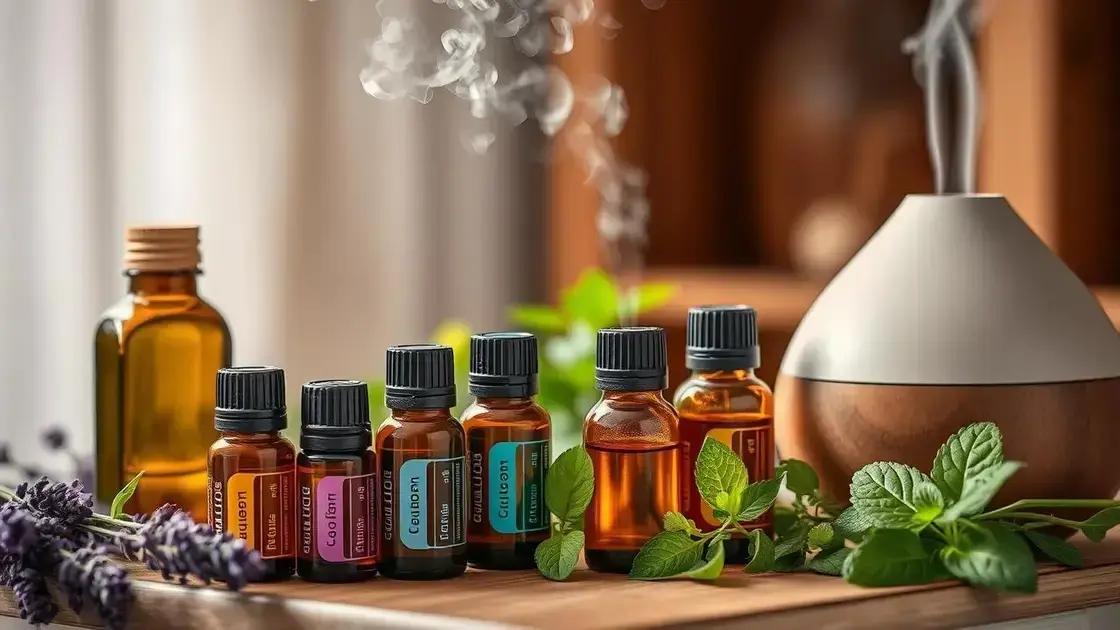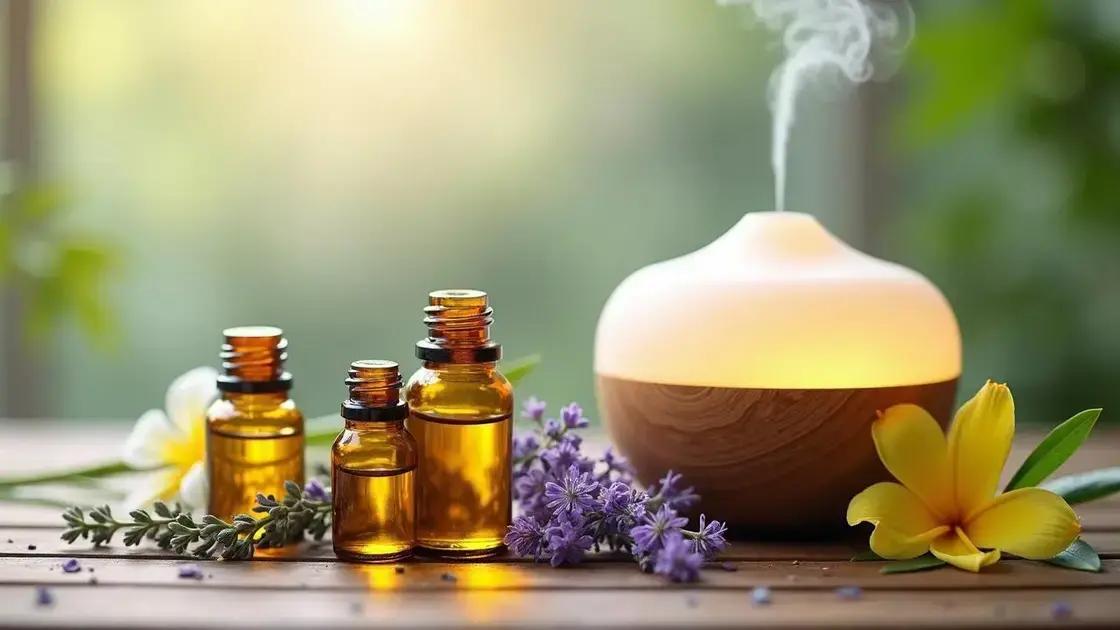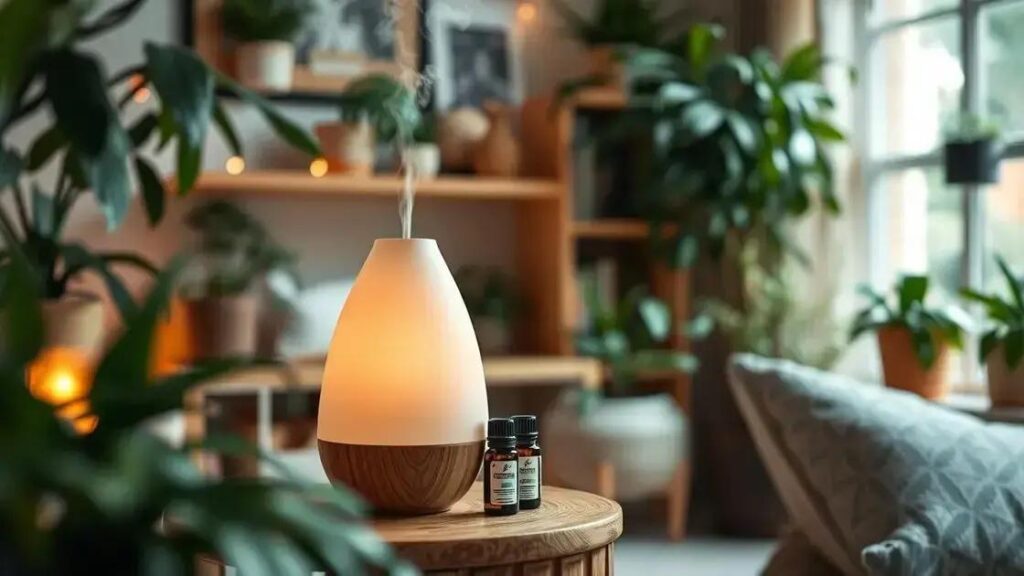Aromatherapy plays a significant role in creating a relaxing space by utilizing essential oils that promote calmness and well-being. To effectively incorporate aromatherapy, choose oils like lavender and chamomile, use a diffuser for scent distribution, and create a personal relaxation area with calming colors and comfortable furniture. Remember to follow safety precautions while utilizing these oils to enhance your environment.
Aromatherapy is a powerful tool for enhancing mental well-being and tranquility in your personal environment. By utilizing essential oils, you can create a serene atmosphere that promotes relaxation and stress relief. In this article, we will explore the basics of aromatherapy, the best essential oils for a calming space, and practical tips for incorporating these techniques into your home. Discover how easy it is to transform your surroundings into a peaceful retreat.
Understanding Aromatherapy Basics

Aromatherapy is a holistic healing treatment that uses natural plant extracts to promote health and well-being. It is based on the idea that essential oils derived from flowers, leaves, and other parts of plants can have a profound impact on mood and emotional health. The practice has been around for thousands of years, originating from ancient cultures using plants and their properties for therapeutic purposes.
Key Concepts in Aromatherapy
In aromatherapy, essential oils are the vital life force of a plant. They capture the plant’s scent and flavor, along with therapeutic properties. These oils are typically extracted through steam distillation or cold pressing. It is essential to use pure essential oils from reputable sources to ensure safety and effectiveness.
How Aromatherapy Works
Aromatherapy works through scent and absorption. When you inhale essential oils, they can stimulate the emotional center of your brain, helping to create a sense of calm and balance. Additionally, essential oils can be absorbed through the skin, often when used in massage or added to baths.
Different Forms of Aromatherapy
There are several ways to experience aromatherapy. These include:
- Diffusion: Using a diffuser to disperse essential oils into the air.
- Topical application: Applying diluted essential oils to the skin for targeted relief.
- Inhalation: Breathing in the aroma directly from the bottle or from a cotton ball.
- Bathing: Adding essential oils to bathwater for relaxation.
Different methods can be combined to create a customized aromatherapy experience that caters to individual needs.
Safety Considerations
Even though aromatherapy is generally safe, it is important to use essential oils correctly. Always dilute oils before applying them to the skin, and check for possible allergies. Pregnant women and those with specific health conditions should consult a healthcare provider before using essential oils.
Essential Oils for a Relaxing Atmosphere

Essential oils play a crucial role in creating a relaxing atmosphere in your home. By choosing the right oils, you can enhance mood, reduce stress, and promote overall well-being. Here are several popular essential oils known for their calming effects:
Lavender
Lavender is one of the most well-known essential oils for relaxation. Its soothing scent can help ease anxiety and improve sleep quality. To use lavender, you can diffuse it in your bedroom or add a few drops to your pillow.
Chamomile
Chamomile essential oil has calming properties that can help reduce stress and promote relaxation. It is often used in teas but can also be diffused or applied topically when diluted with a carrier oil.
Frankincense
Frankincense is known for its grounding scent, which makes it excellent for meditation and calming the mind. Diffusing frankincense in your living space can help create a peaceful environment, promoting relaxation and clarity.
Ylang Ylang
Ylang ylang has a sweet floral scent that can help alleviate feelings of tension and anxiety. It is often used in perfumes and can be added to diffusers or blended in skincare products for a relaxing effect.
Clary Sage
Clary sage is another great essential oil for relaxation. It can promote emotional balance and reduce feelings of stress. You can diffuse it or include it in massage oils combined with a carrier oil.
Method of Use
To create a relaxing atmosphere, you can blend different essential oils in a diffuser. Start with a few drops of each oil you want to combine. A typical ratio might be 3 drops of lavender, 2 drops of chamomile, and 1 drop of ylang ylang. Experiment with different mixes to create your perfect scent.
Using essential oils in a bath is also a fantastic way to unwind. Add a few drops of your chosen oil to warm bath water for an aromatic experience that enhances relaxation.
Tips for Incorporating Aromatherapy

Incorporating aromatherapy into your space can enhance relaxation and create a peaceful atmosphere. Here are some practical tips to help you get started:
Choose the Right Essential Oils
Select essential oils that promote relaxation and calmness. Popular choices include lavender, chamomile, and bergamot. Assess your preferences and consider what scents make you feel at ease.
Use a Diffuser
A diffuser is a great tool for spreading the scent of essential oils throughout a room. Simply add water and a few drops of your chosen oil to the diffuser, and enjoy the aroma as it fills your living space. Remember to keep the diffuser clean for optimal performance.
Create a Relaxation Ritual
Establish a daily relaxation routine that includes aromatherapy. Light a candle, use a diffuser, or take a warm bath with essential oils to incorporate soothing scents into your relaxation time. This can signal to your mind and body that it is time to unwind.
Make Scented Pillows or Sachets
Fill small fabric sachets with dried herbs like lavender or chamomile, or place cotton balls soaked in essential oils in a small pouch. You can tuck these under your pillow or keep them in your drawer for a subtle, relaxing scent.
Incorporate Aromatherapy in Self-Care
Combine aromatherapy with other self-care practices. When taking a bath, add a few drops of essential oil to the water. During a massage, use a carrier oil mixed with essential oils to enhance relaxation and relieve tension.
Ventilate Your Space
Ensure your area is well-ventilated when using essential oils. Proper airflow helps distribute the scent evenly and prevents overwhelming aromas. Open windows or use ceiling fans to keep the air fresh.
Creating Your Personal Relaxation Space

Creating your personal relaxation space is essential for enhancing your well-being and reducing stress. Here are some steps to help you design an inviting area:
Choose a Quiet Location
Select a spot in your home that is away from noise and distractions. This can be a corner of your bedroom, a cozy nook in the living room, or even a dedicated room for relaxation.
Incorporate Comfortable Furniture
Include comfortable seating options like a soft chair, bean bag, or cushions. Ensure that it is a place where you can curl up with a book or meditate without discomfort.
Add Soft Lighting
Lighting is crucial for setting the mood. Use soft, warm lights or lamps with dimmers. You can also include candles with calming scents to add a soothing ambiance.
Use Calming Colors
Choose paint colors or decorating elements that promote relaxation. Soft blues, greens, and pastels are typically calming and can help create a serene atmosphere.
Include Aromatherapy Elements
Incorporate essential oils and diffusers into your space. Place a diffuser on a side table or shelf, and use your favorite essential oils to fill the room with calming scents. This adds both fragrance and ambiance to your relaxation area.
Integrate Nature
Bring nature indoors with houseplants or flowers. Plants like peace lilies or snake plants can improve air quality and enhance relaxation. Alternatively, you can use images or artwork that feature serene landscapes.
Personalize the Space
Include items that bring you joy and comfort, such as pictures, books, or sentimental objects. Personal touches make the space uniquely yours and promote a sense of peace.
Keep it Clutter-Free
Maintain simplicity in your relaxation space. A clean and organized area contributes to tranquility and helps clear your mind. Regularly declutter the space to maintain a peaceful environment.
Embracing Aromatherapy for a Peaceful Life
Incorporating aromatherapy into your daily routine can significantly enhance your relaxation and overall well-being. By understanding the basics of essential oils, choosing calming scents, and creating a dedicated relaxation space, you can cultivate a serene environment that promotes tranquility.
With the right essential oils, thoughtful tips on integrating them into your space, and personal touches, you can transform any corner of your home into a peaceful retreat. Remember to prioritize your comfort and choose elements that resonate with you.
Ultimately, the path to a relaxing atmosphere is unique to each individual. Embrace aromatherapy as a valuable tool and allow it to enrich your life with calmness and clarity.
FAQ – Frequently Asked Questions about Aromatherapy
What is aromatherapy?
Aromatherapy is a holistic healing treatment that uses essential oils from plants to enhance emotional and physical well-being.
How can essential oils improve my relaxation space?
Essential oils can create calming atmospheres that promote relaxation, reduce stress, and uplift your mood when used in diffusers or other applications.
Which essential oils are best for relaxation?
Popular essential oils for relaxation include lavender, chamomile, frankincense, and ylang ylang, known for their calming effects.
How do I use a diffuser with essential oils?
To use a diffuser, fill it with water, add a few drops of your chosen essential oil, and turn it on to disperse the scent throughout the room.
Can aromatherapy help with anxiety?
Yes, scents from essential oils can trigger the emotional center of the brain, helping to reduce anxiety and promote a sense of calm.
What are some tips for creating my relaxation space?
Choose a quiet location, incorporate comfortable furniture and soft lighting, use calming colors, and include personal touches that bring you joy.












